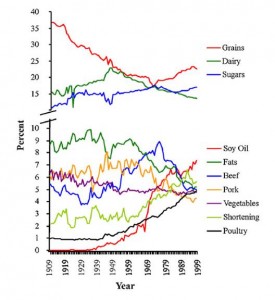Today's post is a guest blog from current Cressey Performance intern, Tyler Simmons. I had a super busy week, so when Tyler brought up this topic at CP the other day, I jumped at the opportunity to get him to write about it. You won't be disappointed.Many people don't know this, but before 1979, there were no public health guidelines for what foods our citizens should eat. So where would we be now without a food pyramid?
In the 1950s, a researcher named Ancel Keys developed a theory that certain dietary fats were a major cause of heart disease. Although the support for this theory was weak, it would eventually become the basis of nutritional recommendations for the entire country. This eventually morphed in to the theory that dietary cholesterol and saturated fat cause heart disease, and for the public it was easy to make the jump that these also cause weight gain and obesity.
So the US government decided to step in for the benefit of the uneducated masses and save us from imminent death and obesity.
The result? Since 1979, when the McGovern Committee made the first "Dietary Guidelines for Americans," we've been encouraged to eat less animal fat, less cholesterol, and more grains. And, we were pretty successful at it; Americans adopted our new food guidelines and embraced a low-fat way of eating for the last 30 years. Here's a chart of how are diets have changed over the last 100 years:

© Source: Changes in consumption of omega-3 and omega-6 fatty acids in the United States during the 20th century. Am J Clin Nutr. 2011
We did a pretty good job. We've eaten less fat, less beef, less pork, and less dairy (fear the butter!) At the same time, we've eaten more chicken, more shortening, and drastically more soy oil (healthy fat right?).

Comment: For a more in depth look at the connection between GMO foods such as soy and corn, and sterility in animals and possibly even humans read the following article Children of the Corn: GMOs Don't Qualify As Food